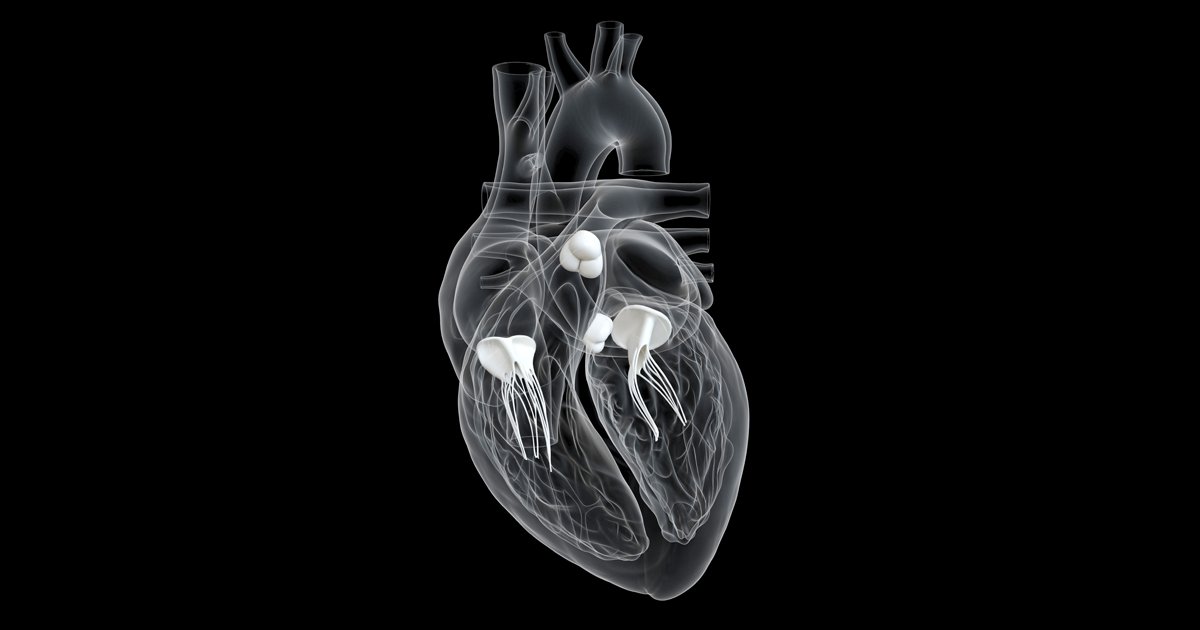Key takeaways:
- A new class of TAVR valve was successfully implanted in 28 patients with severe aortic valve stenosis.
- The valve restored blood flow to levels of a healthy aortic valve and showed good safety at 1 year.
In a first-in-human study, a new class of transcatheter heart valve demonstrated good safety and restored aortic blood flow to levels similar to a healthy aortic valve at 1 year, a speaker reported.
The results of a prospective, single-center study evaluating the safety and feasibility of a biomimetic valve (DurAVR, Anteris) in patients with severe aortic stenosis undergoing transcatheter aortic valve replacement were presented at the Society for Cardiovascular Angiography and Interventions Scientific Sessions.

A new class of TAVR valve was successfully implanted in 28 patients with severe aortic valve stenosis. Image: Adobe Stock
The investigational device is a balloon-expandable, single-piece, native-shaped biomimetic heart valve that features anti-calcification (Adapt) and commissure alignment technology, according to the presentation.
“With other transcatheter heart valves, in general, you take three different leaflets, trying to make sure they’re very similar, and sew those into an either surgical or transcatheter heart valve,” Azeem Latib, MD, FSCAI, director of interventional cardiology and structural heart interventions at Montefiore Medical Center, said during a press conference. “This is very unique because it’s a single piece, designed to get the shape accurate so that it has a similar design as a human valve.
“Because we’re now treating patients who are young and who will live longer, we also have commissural alignment so that we can align the transcatheter heart valve’s commissures with those of a native valve, and the open cell is enlarged to allow for coronary access,” Latib said.
For this first-in-human trial, researchers evaluated the safety and feasibility of the new TAVR valve in 28 patients with severe aortic stenosis (mean age, 74 years; 75% women; mean Society of Thoracic Surgeons Predicted Risk of Mortality score, 2.73%).
The average area-derived annulus diameter in this cohort was 22.61 mm.
Overall, 64% of participants were NYHA class II and the remainder were NYHA class III.
The primary safety endpoints were all-cause death, MI, disabling stroke and major bleeding. In addition, the researchers also evaluated for a composite of 11 Valve Academic Research Consortium-3 endpoints.
Implant of the TAVR valve was successful in 100% of participants and 100% were followed up at 30 days.
None of the primary safety endpoints had occurred in any of the participants by 30 days.
Among all VARC-3 endpoints, 2 patients experienced bleeding events; three had major access site or vascular complications; and two patients with preexisting conduction abnormalities received a permanent pacemaker.
Beyond 30 days, there was one noncardiac death. No further VARC-3 endpoints were reported after 30 days.
Among the 19 participants so far who have reached 1-year follow-up, the mean effective orifice area increased from 0.69 at baseline to 2.03 at 30 days and remained durable out to 1 year.
Doppler velocity index increased from 0.2 at baseline to 0.55 at 30 days and also remained durable out to 1 year, according to the study.
The mean pressure gradient also dropped from 53.43 at baseline to 8.5 at 30 months and remained relatively unchanged at 1 year.
Moreover, Latib reported that the biomimetic TAVR valve restored normal aortic flow, with no significant differences in flow displacement or flow reversal ratio compared with a healthy aortic valve (P > .05).
“The DurAVR device is a new class of TAVR,” Latib said during the press conference. “Its biomimetic design has so far shown excellent hemodynamic performance. Anteris’ commissural alignment system was intuitive and easy to use.
“The first-in-human trial has shown great safety outcomes,” he said. “We’ve also completed a 13-patient early feasibility study in the United States that has shown great outcomes … We hope to show you more and more that the DurAVR THV restores laminar flow and has long-term benefit both on durability and patient outcomes.”
